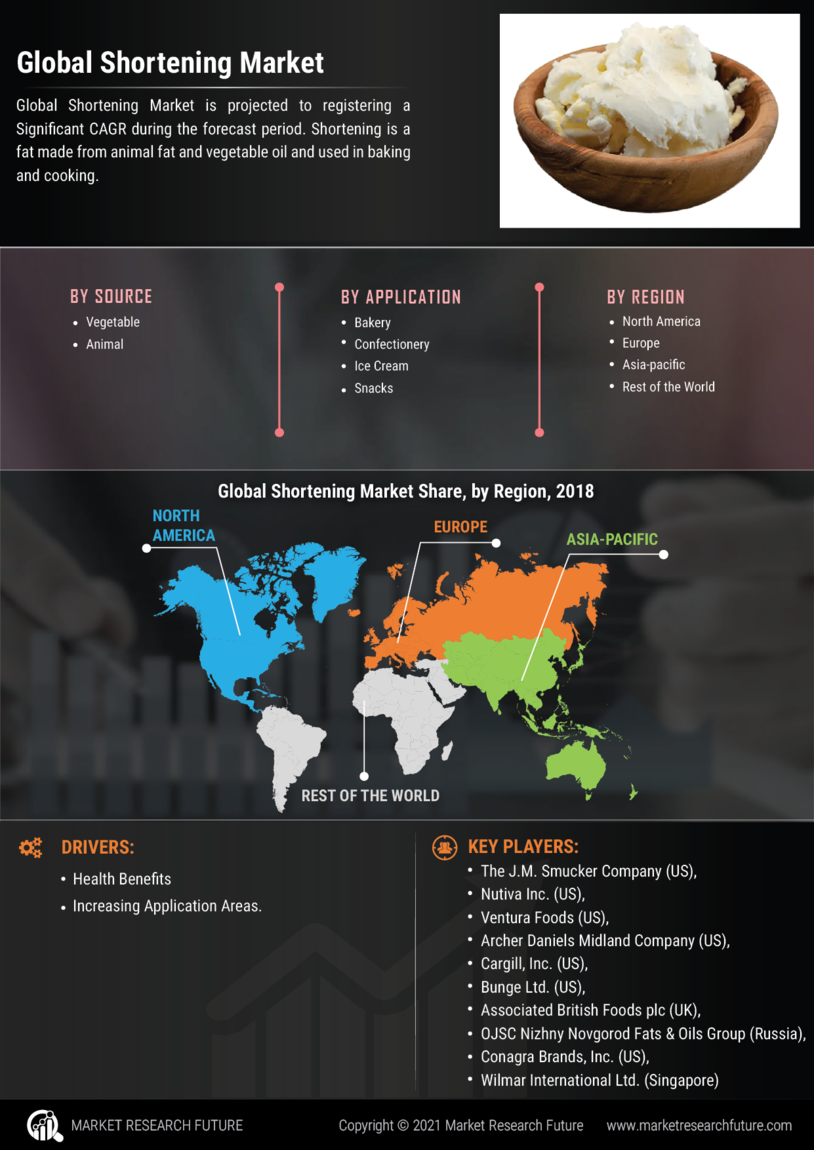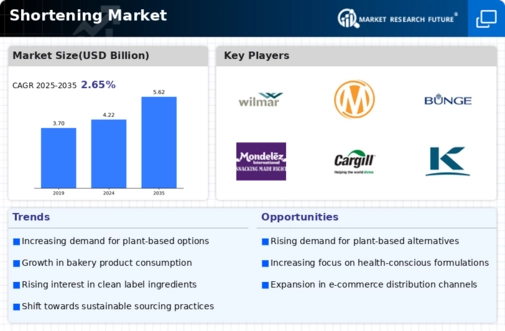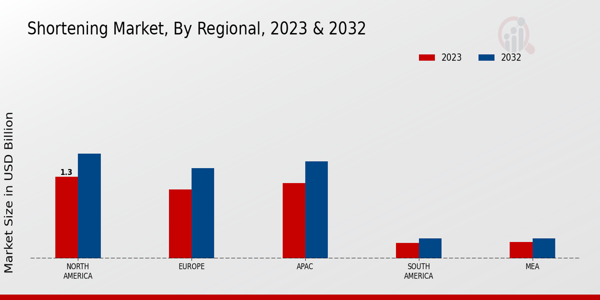Market Growth Projections
The Global Shortening Market Industry is poised for steady growth, with projections indicating a compound annual growth rate (CAGR) of 2.65% from 2025 to 2035. This growth trajectory reflects the industry's resilience and adaptability in response to changing consumer preferences and market dynamics. As the market evolves, it is expected to reach a value of 5.62 USD Billion by 2035, driven by factors such as increased demand for processed foods and innovations in product offerings. The anticipated growth underscores the importance of strategic planning and investment in research and development to capitalize on emerging opportunities within the industry.
Health and Wellness Trends
In recent years, the Global Shortening Market Industry has witnessed a shift towards health-conscious consumer behavior. As individuals become more aware of dietary choices, there is a growing demand for healthier shortening alternatives, such as those derived from plant-based sources. This trend indicates a potential for innovation within the industry, as manufacturers explore options that cater to health-oriented consumers. The market's evolution may lead to the introduction of products that align with nutritional guidelines, thereby expanding the consumer base. This dynamic could significantly influence market growth, particularly as the industry adapts to meet the needs of health-focused consumers.
Regulatory Changes and Standards
The Global Shortening Market Industry is influenced by evolving regulatory frameworks and food safety standards. Governments worldwide are increasingly implementing regulations that govern the use of certain ingredients in food products, including shortening. These regulations aim to ensure consumer safety and promote transparency in food labeling. As a result, manufacturers must adapt their formulations to comply with these standards, which may lead to the development of cleaner label products. This regulatory landscape could drive innovation within the industry, as companies seek to create shortening options that align with both consumer preferences and regulatory requirements.
Rising Demand for Processed Foods
The Global Shortening Market Industry experiences a notable surge in demand for processed foods, driven by changing consumer lifestyles and preferences. As urbanization continues to rise, more individuals seek convenient meal options, leading to increased usage of shortening in various food products. This trend is particularly evident in regions with growing populations and busy lifestyles, where ready-to-eat meals and baked goods are in high demand. The market is projected to reach 4.22 USD Billion in 2024, reflecting the industry's adaptation to consumer needs and the growing reliance on shortening as a key ingredient in food production.
Sustainability and Environmental Concerns
Sustainability has emerged as a significant driver within the Global Shortening Market Industry. As consumers become more environmentally conscious, there is a growing demand for shortening products that are produced sustainably. This trend encourages manufacturers to adopt eco-friendly practices, such as sourcing ingredients from sustainable farms and minimizing waste during production. The industry's response to these environmental concerns may lead to the development of shortening options that appeal to eco-conscious consumers. By aligning with sustainability goals, companies can enhance their brand image and potentially capture a larger share of the market, contributing to overall growth.
Technological Advancements in Food Production
Technological advancements play a crucial role in shaping the Global Shortening Market Industry. Innovations in food processing and manufacturing techniques enhance the efficiency and quality of shortening production. For instance, the adoption of advanced emulsification technologies allows for the creation of shortening products with improved texture and stability. These advancements not only optimize production processes but also enable manufacturers to meet evolving consumer demands for diverse food applications. As the industry embraces technology, it is likely to witness sustained growth, with projections indicating a market value of 5.62 USD Billion by 2035, driven by enhanced product offerings.














